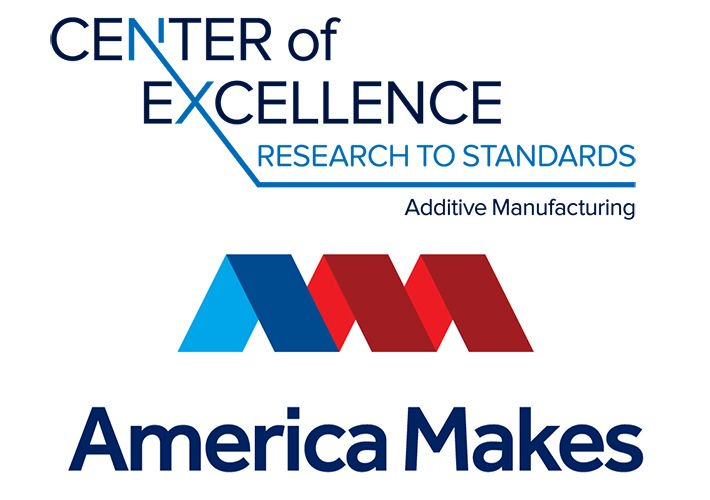![[Image: ASTM International]](https://fabbaloo.com/wp-content/uploads/2020/05/coeam_img_5eb09fa23ab55.png)
ASTM International was recently awarded a $1.2 million investment set to help further standards.
The standards development organization has been increasing its focus on additive manufacturing as the technology suite grows. With the opening of a new Additive Manufacturing Center of Excellence (AM CoE) last summer, ASTM and its partners sought to enhance and expand exploration of technical standards, R&D, education, training, and more targeted attention for these technologies.
In December, ASTM announced that it “became the first standards development organization to win an award from America Makes.”
The award, with $800K in funding via the Air Force Research Laboratory (AFRL) and $400K of in-kind support from project team partners, is one of two Advancing Additive Manufacturing Post-Processing Techniques (AAPT) from America Makes’ project call issued in July 2018.
America Makes noted in its project call:
“The focus of the AAPT Directed Project is of particular interest to AFRL as it seeks to further expand the use of Selective Laser Melting (SLM) for critical parts. However, the risk of employing AM technologies like SLM derives from the cost and uncertainty imposed by some of the pre- and post- processing steps that occur ‘outside the box’ of the AM machine remains a major concern and prohibitive for wider adoption. The current lack of a consensus of best practices for material handling and post-processing leads to high variability and massive qualification challenges, invariably leading to higher costs to adopt and employ AM technologies.
Through the AAPT Directed Project, AFRL specifically seeks to address two main issues. First, quantify the mechanical performance debit of using as built SLM surfaces to fabricate high-temperature nickel super alloy canonical features, such as thin walls and narrow flow channels. Second, quantify the effectiveness of Hot Isostatic Pressing (HIP) when producing high-temperature nickel super alloy canonical features, such as thin walls and narrow flow channels.”
ASTM and Arizona State University were announced as the two awardees in December, with approximately $2.4M in total funding.
The AM CoE will see a number of partners, new and existing, contributing to a project set to begin early this new year to focus on SLM methodology. Existing partners Auburn University, NASA, EWI, and NIAR will be joined by Quintus Technologies, Carpenter Technologies Corporation, Aerojet Rocketdyne, Rolls Royce Corporation, Honeywell Aerospace, GE Aviation, and Raytheon.
ASTM states that the project “will focus specifically on: determining the mechanical performance debit of using as-built additively manufactured components, understanding how this changes with application of Hot Isostatic Pressing, testing the values by burst-testing thin wall components with narrow flow channels, and ultimately publishing standards based on these results.”
Starting in 2009 with the launch of its first work group focused on additive manufacturing, ASTM has been working to develop standards and consistency for this young technology.
When I spoke recently with Mohsen Seifi, PhD, ASTM International’s Director of Global Additive Manufacturing Programs, he was clear about the organization’s goals to “close standardization gaps” through work with partners. ASTM and America Makes signed a memorandum of understanding (MoU) in 2013, establishing a strong relationship. Of the AAPT award, Dr. Seifi noted:
“We are thrilled to take our longstanding partnership with America Makes to the next level through this major award. Our center of excellence is uniquely positioned to illuminate the path toward high-quality, consensus-based standards that support new AM technologies and post-processing techniques.”
Focus on the end-to-end workflow is critical for full, scalable, reliable, repeatable success in manufacturing processes.
Rob Gorham, America Makes’ Executive Director, noted that the awards to ASTM and ASU are based on intriguing project proposals. He said:
“…We anticipate the projects will yield important gains in process control, certified processes, and the qualification of materials and parts, which will all be instrumental in reducing post-processing costs, one of the biggest barriers to the wider adoption of AM technologies.”
ASTM’s project partners likewise indicate their enthusiasm for the work.
Project principal investigator Dr. Nima Shamsaei is the Director of the National Center for Additive Manufacturing Excellence at Auburn University. He says:
“All of the partners, including our world-class researchers here at Auburn, are excited to start collaborating more closely in this crucial area. The potential for this project to help transform sectors and industries in the years to come simply can’t be underestimated.”
EWI also expresses excitement, as Dr. Alex Kitt, Product Manager at EWI-operated Buffalo Manufacturing Works, says:
“This work demonstrates the commitment of government, industry and academia to collaborate on research that will lead to the development of impactful AM standards. We are confident these standards will increase adoption and confidence in this cutting-edge technology. EWI is excited to lend its expertise and capabilities to this joint effort.”
With an early 2019 start to project work, we look forward to hearing about progress in SLM process understanding.
Via ASTM and America Makes











